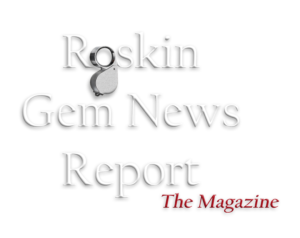How High Inflation may affect Real Cost of Gems: Malawi, Zimbabwe, Afghanistan, Ethiopia, & Others
Gary Roskin
Roskin Gem News Report
There may be all sorts of reasons for high steady pricing of gems (supply, demand, rising costs of mining equipment, fuel, shipping, travel, manufacture, etc…), but one reason you may have left out of the equation is seen here in the global economic numbers. According to reports by the International Monetary Fund (IMF) released in April 2024, updates in current and projected rates of inflation show significant numbers in over a dozen countries, some highlighted below.
Some international economic reviews call it “Hyperinflation.” [PWC Global Viewpoint] That’s when prices go through the roof, fast. It’s a term that is supposed to be used when inflation isn’t just creeping up, but skyrocketing at over 50% per month. We do not see that in any gem producing countries listed below except for Zimbabwe. If the sale of Zimbabwe diamonds had anything to do with the country’s economy, and not to the global diamond market or government ownership and oversight, we would expect prices to be steadily increasing.
For artisanal mining communities that rely on foreign buyers (and the value of foreign currency), one should expect that costs of gems in foreign currency will be based upon the exchange rate to local monies.

Madagascar
Checking the chart above, we see that inflation in Madagascar has been close to 9% the past two years and could be close again this year. However, according to Tom Cushman, of Richfield Investor Services [http://www.richfieldinvestorservices.com], while the dollar has been strong the past several years, the Ariary has been gaining a little bit of ground back since January. Still, cost of living is high, and the costs for mining gems just as high.

Malawi
According to the report by the IMF’s World Economic Report, (above) over the past three years, Malawi’s inflation reached a whopping 60% (an average of 20% each year, but last year was listed at 40%). This year is expected to be “better” at 18%, but this is crippling the artisanal miners who see costs skyrocketing.
*Sri Lanka
Data and projections for 2023–29 are excluded from publication owing to ongoing discussions on sovereign debt restructuring.
*Afghanistan
Data for 2021 and 2022 are reported for selected indicators, with estimates for fiscal data. Estimates and projections for 2023–29 are omitted because of an unusually high degree of uncertainty given that the IMF has paused its engagement with the country owing to a lack of clarity within the international community regarding the recognition of a government in Afghanistan. Data reported in the WEO contain a structural break in 2021 owing to the change from calendar year to solar year; the actual reported GDP growth rate for solar year 2021 is
–20.7 percent.
Speaking with Gary Bowersox, of Gem Hunters Corporation, it’s always best to pay for local services in local currency. When working with miners in foreign countries, Bowersox notes that while negotiations are in local currency, keeping track of the exchange rate on a daily basis, payments are made by wiring in US dollars.
The Afghani has been steadily losing ground against the US Dollar since 2011. However, according to the chart below, since 2022, the Afghani has been gaining strength. But is it real? This is why the IMF has paused its reporting. And why Bowersox suggests checking the exchange rates on a daily basis.
This can only have a stressful effect on artisanal miners who cannot predict what or when they will find gems to bring to market.

*India
Real GDP growth rates are calculated in accordance with national accounts with base year 2011/12.
*Zimbabwe
Authorities have recently finished redenominating their national accounts statistics following the introduction in 2019 of the Real Time Gross
Settlement dollar, later renamed the Zimbabwe dollar. The Zimbabwe dollar previously ceased circulating in 2009, and during 2009–19 Zimbabwe operated under a multicurrency regime with the US dollar as the unit of account.
Tap here to read more on the world economic outlook at IMF WEO.













